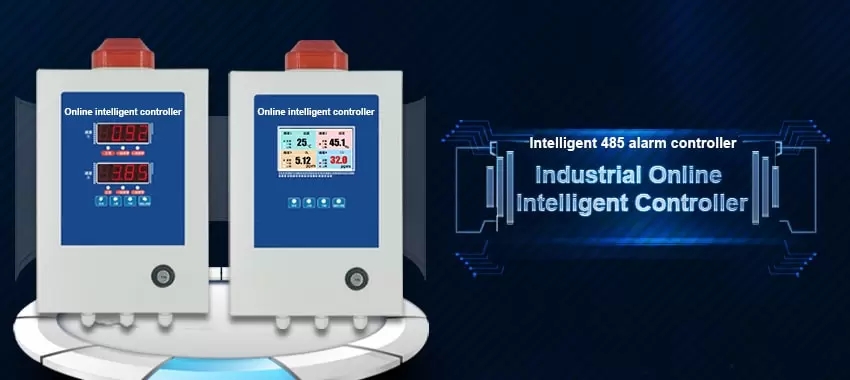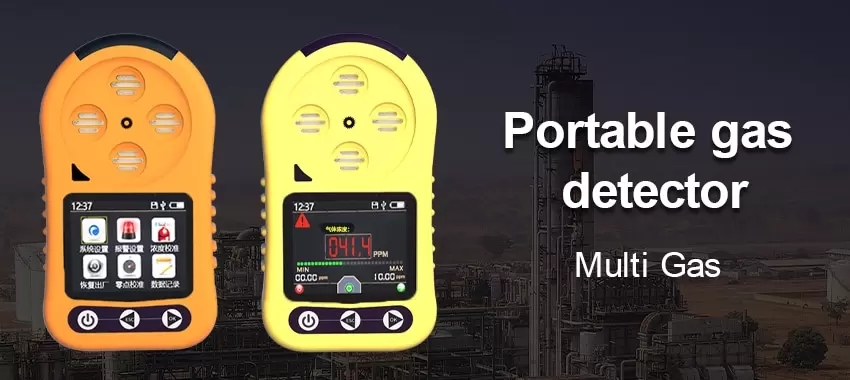Background:
Monitoring hazardous gases in ambient air can be challenging, but is critical to ensuring a safe industrial environment. Excessive oxygen or toxic gases such as hydrogen sulfide, chlorine or ammonia create new hazards for employees and equipment in the area. Fortunately, finding the best sensors and monitoring systems for your environment can help automate the gas detection process and give you peace of mind. The toxic gas detector for home developed by JXCT can help people to carry out online monitoring.
Industrial Toxic Gas and Oxygen Detectors monitor the presence of gases in designated areas and sound an alarm when dangerous levels are reached. Gas detectors are typically installed where there is a possibility of gas leaks and where unsafe gas levels pose an immediate danger to workers or equipment. Toxic gas detectors are widely used in natural gas, petroleum and other industries, medical treatment, mining, nuclear energy, construction, food and beverage, and industry.

How Do Toxic Gas Detectors Work?
Toxic gas detector for home and oxygen detectors work by measuring the concentration of specific gases in the air. JXCT specializes in fixed gas detection using remote or locally installed sensors. Depending on the different gases involved and the size of the work area, one or more types of gas detectors may be used in the same area.
The preset levels for gas detectors vary according to the type and concentration of the gas being monitored. Sensors inside toxic gas detectors read gas levels and when they go above or below specified levels, an alarm is activated. The sensor is made from an electrochemical cell. Alarms can be visual or auditory. Readings can be sent to the control room by digital or analog signal. Alarms can activate local relays to operate alarm safety equipment, such as horns, fans, valves, etc.

Use an oxygen detector to monitor oxygen consumption
Normal oxygen (O2) levels in the atmosphere hover between 19-23%, but when below this range, workers may experience drowsiness, nausea and rapid heartbeat. In the workplace, dilution with nitrogen, helium, and other inert gases commonly used in laboratory, pharmaceutical, or semiconductor applications can lead to oxygen depletion.
Very low oxygen levels below 12% can lead to loss of consciousness and, in extreme cases, death. Industrial oxygen sensors help prevent these dangers by accurately monitoring oxygen levels and triggering an alarm when it drops below 19.5%, the level currently regulated by OSHA. A reliable O2 monitor helps create a safe room and work environment.
Prevent Workplace Hazards With Toxic Gas Detectors
Some toxic gases have a distinct smell, while others, such as carbon dioxide, have no smell and cannot be detected by humans. The presence of high concentrations of toxic gases can pose serious health and safety risks, including explosion, fire, illness or death. Toxic gas detectors help prevent problems by monitoring hazardous gas levels in areas of potential leaks. They are commonly used in oil rigs, chemical plants and manufacturing facilities where toxic liquids and gases are stored and handled.
Important things to consider when choosing a toxic gas detector include:
1. Reliability: This is probably the most important, as an oxygen detector that fails frequently or has a short product life can put your workplace at risk.
2. Features and usability: You want to choose an oxygen detector that is durable, easy to install, and able to withstand the conditions of your operating environment. The device should also meet your data logging requirements and be easy to maintain and calibrate.
3. Reading Sensitivity and Accuracy: Some gas detection applications require higher sensitivity than others, so make sure your toxic gas detector can record readings within the range you require.
4. Alarm Response Time: When oxygen or toxic gases reach dangerous levels, every second counts. Make sure the response time of the gas detector you choose allows you enough time to react and fix the problem.
5. Sensitivity to Environmental Factors: Depending on the operating environment, gas detectors may be exposed to heat, humidity, moisture, or other gases. It is critical that these factors do not affect the reliability of the readings and results provided by the toxic gas detector.
 : +86 155 8830 2704
: +86 155 8830 2704 : jxdziot@gmail.com
: jxdziot@gmail.com
